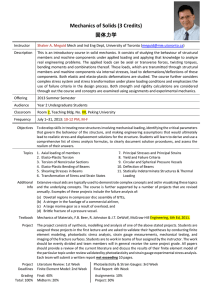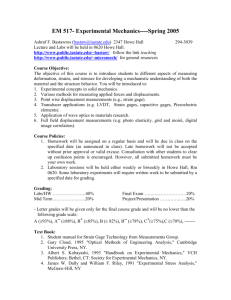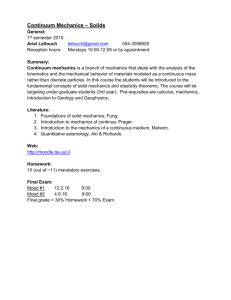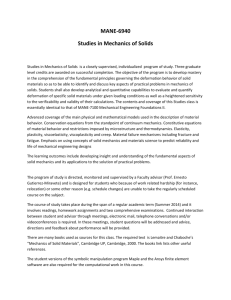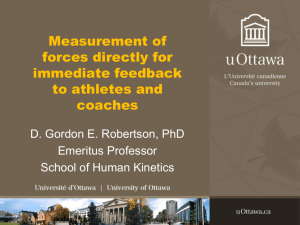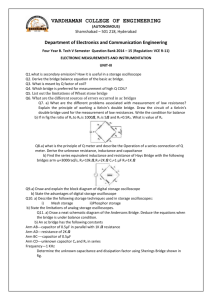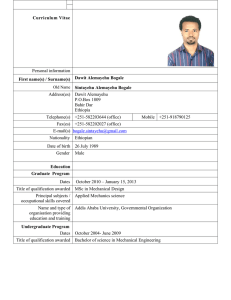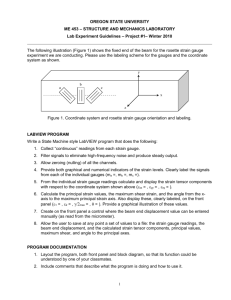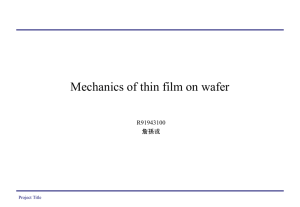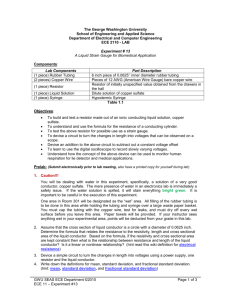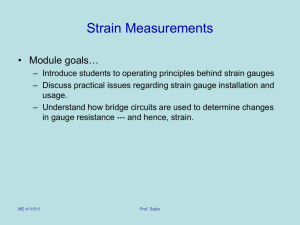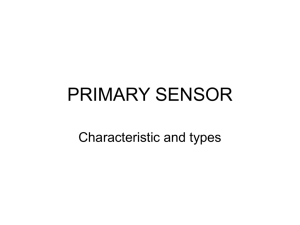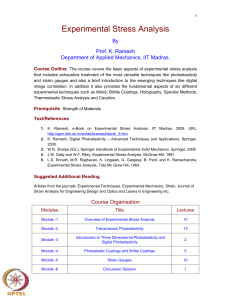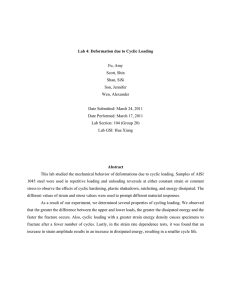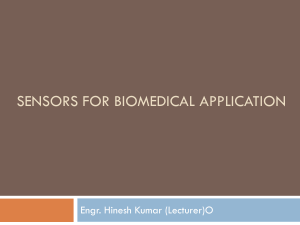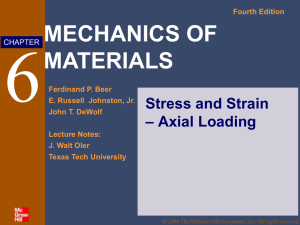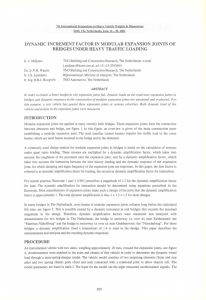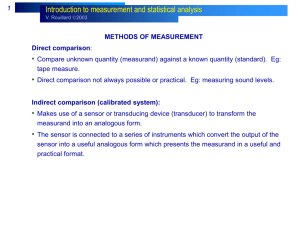AEEM438 - Department of Aerospace Engineering
advertisement
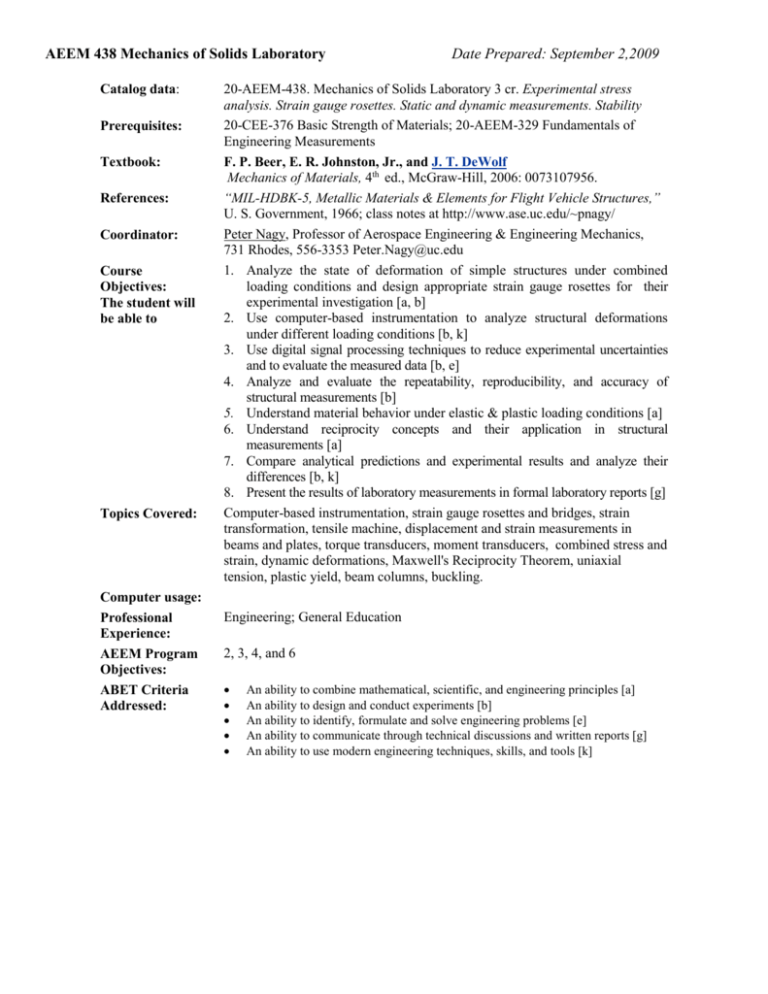
AEEM 438 Mechanics of Solids Laboratory Catalog data: Prerequisites: Textbook: References: Coordinator: Course Objectives: The student will be able to Topics Covered: Computer usage: Professional Experience: AEEM Program Objectives: ABET Criteria Addressed: Date Prepared: September 2,2009 20-AEEM-438. Mechanics of Solids Laboratory 3 cr. Experimental stress analysis. Strain gauge rosettes. Static and dynamic measurements. Stability 20-CEE-376 Basic Strength of Materials; 20-AEEM-329 Fundamentals of Engineering Measurements F. P. Beer, E. R. Johnston, Jr., and J. T. DeWolf Mechanics of Materials, 4th ed., McGraw-Hill, 2006: 0073107956. “MIL-HDBK-5, Metallic Materials & Elements for Flight Vehicle Structures,” U. S. Government, 1966; class notes at http://www.ase.uc.edu/~pnagy/ Peter Nagy, Professor of Aerospace Engineering & Engineering Mechanics, 731 Rhodes, 556-3353 Peter.Nagy@uc.edu 1. Analyze the state of deformation of simple structures under combined loading conditions and design appropriate strain gauge rosettes for their experimental investigation [a, b] 2. Use computer-based instrumentation to analyze structural deformations under different loading conditions [b, k] 3. Use digital signal processing techniques to reduce experimental uncertainties and to evaluate the measured data [b, e] 4. Analyze and evaluate the repeatability, reproducibility, and accuracy of structural measurements [b] 5. Understand material behavior under elastic & plastic loading conditions [a] 6. Understand reciprocity concepts and their application in structural measurements [a] 7. Compare analytical predictions and experimental results and analyze their differences [b, k] 8. Present the results of laboratory measurements in formal laboratory reports [g] Computer-based instrumentation, strain gauge rosettes and bridges, strain transformation, tensile machine, displacement and strain measurements in beams and plates, torque transducers, moment transducers, combined stress and strain, dynamic deformations, Maxwell's Reciprocity Theorem, uniaxial tension, plastic yield, beam columns, buckling. Engineering; General Education 2, 3, 4, and 6 An ability to combine mathematical, scientific, and engineering principles [a] An ability to design and conduct experiments [b] An ability to identify, formulate and solve engineering problems [e] An ability to communicate through technical discussions and written reports [g] An ability to use modern engineering techniques, skills, and tools [k] Instrument of Assessment Course Name: Mechanics of Solids Laboratory Quarter_______________________________ Outcome Objective HW Course # AEEM-438 Instructor_____________________________ Quiz MidTerm Final Report a) An ability to apply knowledge of mathematics, science, and engineering to problems in the aerospace disciplines b) An ability to design and conduct experiments, as well as to analyze and interpret data c) An ability to design an aerospace system, component, or process to meet desired needs d) An ability to function on multidisciplinary teams e) An ability to identify, formulate, and solve engineering problems in the aerospace disciplines f) An understanding of professional and ethical responsibility g) An ability to communicate effectively in written and oral presentation h) The broad education necessary to understand the impact of engineering solutions in a global and societal context i) A recognition of the need for an ability to engage in life-long learning j) A knowledge of contemporary issues through participation in a general education program k) An ability to use the techniques, skills, and modern engineering tools necessary for engineering practice l) Enhanced understanding of the relationship between theory and professional practice through the cooperative education experience m) The opportunity to specialize and to participate in a research experience Notes: 1) Please attach a list of assignments, quizzes and exams. 2) Please add comments or concerns regarding the present assessment. 3) Please provide any comments or suggestions for improvement. Oral % of Stud. with C and above Comments
